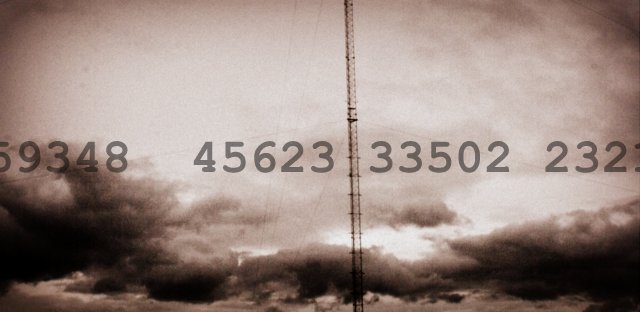(Source: Numbers Stations)
Working at a numbers station 6 decades ago was not much different than working at an AM broadcast station. Located on a WWII old Naval Base it consisted of one building surrounded by a double chain link fence inside which older local men drove pickup trucks around for security. Inside the building there was a workshop, two 20,000-watt AM shortwave transmitters, crystal controlled oscillators, and a soundproof booth with a record player and records of well-known music in a language and culture common to the target. Outside the compound was an antenna farm with a log periodic antenna, a rhombic, and a couple dipoles.
I lived, with my wife, about a mile from the site and would drive through a back road to the location, be admitted by security through each gate, and park, and relieve the other op who, after briefing me, was free to go home. My job was to follow a schedule, select the proper frequency at the proper time, tune the transmitter, hit the plate voltage, play the record the schedule told me to, and then recite the messages arranged in five-number groups of numbers in the appropriate language into the microphone in the recording booth. This was all done live and, as far as I know, no recordings were kept.
[…]Other than that it’s just a job. The messages were all prepared somewhere else by someone else and delivered to us along with the schedule. We all had high level clearances but we never knew who we sent these to or what the real ones might have said. This sort of compartmentalization was (and is) common.
I often thought of those for whom the messages were intended… how they felt, where they were… whether they were in an attic or shed or stranded somewhere copying down a message that was a threat to their very lives on a radio that was a death penalty to simply be in possession of. I was very careful to do it right.[…]

